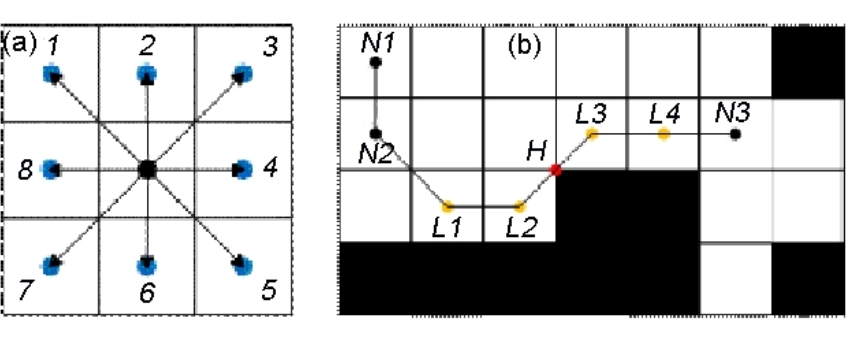[1] Longlong TAO, Pengcheng LONG, Xiaolei ZHENG et al. An improved A* algorithm-guided path-planning method for radioactive environment. Journal of Radiation Research and Radiation Processing, 36, 060601(2018).
[2] C Chen, J J Cai, Z Wang et al. An improved A* algorithm for searching the minimum dose path in nuclear facilities. Progress in Nuclear Energy, 126, 103394(2020).
[3] N Chao, Y K Liu, H Xia et al. Grid-based RRT* for minimum dose walking path-planning in complex radioactive environments. Annals of Nuclear Energy, 115, 73-82(2018).
[4] Guangcheng ZHANG, Tao HE, Xiaolei ZHENG et al. Simulation research of nuclear emergency path planning based on the coupling of dose weight factor and ant colony optimization. Journal of Radiation Research and Radiation Processing, 38, 020601(2020).
[5] H F Zhou, H Zhang, M W Qiu. Radiation avoiding algorithm for nuclear robot path optimization. Annals of Nuclear Energy, 169, 108948(2022).
[6] Z Wang, J J Cai. The path-planning in radioactive environment of nuclear facilities using an improved particle swarm optimization algorithm. Nuclear Engineering and Design, 326, 79-86(2018).
[7] K Tan, M K Li, H X Gu et al. A radiation avoiding algorithm of path optimization for radiation protection of workers and robots. Annals of Nuclear Energy, 135, 106968(2020).
[8] Ziqiang WANG, Xiaoguang HU, Xiaoxiao LI et al. Overview of global path planning algorithms for mobile robots. Computer Science, 48, 19-29(2021).
[9] D H Zhang, X M You, S Liu et al. Dynamic multi-role adaptive collaborative ant colony optimization for robot path planning. IEEE Access, 8, 129958-129974.
[10] Lili JIAO, Fengjiao WANG, Sulin ZHANG et al. Improved A* algorithm for path planning of irregular robots. Computer Knowledge and Technology, 17, 98-100(2021).
[11] Y R Xu, R Liu. Path planning for mobile articulated robots based on the improved A* algorithm. International Journal of Advanced Robotic Systems, 14, 172988141772801(2017).
[12] X Y Ji, S Feng, Q D Han et al. Improvement and fusion of A* algorithm and dynamic window approach considering complex environmental information. Arabian Journal for Science and Engineering, 46, 7445-7459(2021).
[13] Xianqiang XIAO, Dingyong WANG, Jiaen WANG et al. A research on AGV composite autonomous path planning method. Machinery Design & Manufacture, 262-265(2022).
[14] Y Q Chen, J L Guo, H D Yang et al. Research on navigation of bidirectional A* algorithm based on ant colony algorithm. The Journal of Supercomputing, 77, 1958-1975(2021).
[15] J Song, C Hao, J Su. Path planning for unmanned surface vehicle based on predictive artificial potential field. International Journal of Advanced Robotic Systems, 17, 172988142091846(2020).
[16] U Orozco-Rosas, O Montiel, R Sepúlveda. Mobile robot path planning using membrane evolutionary artificial potential field. Applied Soft Computing, 77, 236-251(2019).
[17] Hengzhu ZHAO, Minghan YANG, Duocheng DENG et al. Path planning of mobile robot under expected radiation dose. Journal of Radiation Research and Radiation Processing, 39, 050601(2021).
[18] Yican WU, Jing SONG, Liqin HU et al. Super Monte Carlo simulation program for nuclear and radiation process: SuperMC. Nuclear Science and Engineering, 36, 62-71(2016).
[19] P C Long, Q Zeng, T He et al. Development of a geometry-coupled visual analysis system for MCNP. Progress in Nuclear Science and Technology, 2, 280-283(2011).




